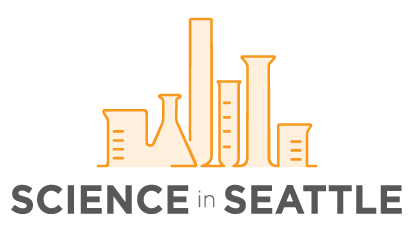This week we profile a recent publication in PNAS from Ian Dowsett (left), Mitchell Lee (middle)
and Alan Herr (right) at the University of Washington Department of Pathology.
Can you provide a brief overview of your lab’s current research focus?
Our lab in the Department of Pathology at UW is interested in how cells deal with “genetic entropy”, defined as the progressive accumulation of mutations. This can occur during aging or during prolonged expression of a “mutator phenotype”. Mutator phenotypes commonly arise in cancers due to mutations that compromise the fidelity of DNA replication or DNA repair. While mutators initially enjoy a more rapid evolution, they run up against a progressive loss of fitness due to the accumulation of deleterious mutations. At the extreme, this mutation accumulation can cause extinction of a mutator clone. We investigate this phenomenon and how cells adapt to it using budding yeast as a model system.
I should add that this work was the product of a stimulating collaboration between our lab and Matt Kaeberlein’s Lab (also in the Department of Pathology), which studies the basic biology of aging. Matt and I co-mentored Mitchell during his thesis.
What is the significance of the findings in this publication?
In Mitchell’s paper, we use mutators to explore the age-old hypothesis that mutation accumulation plays a role in why cells age. There are two basic ideas about this in the literature. The original mutation theory of aging goes back to Peter Medawar who realized that evolution has a hard time preventing the accumulation of mutations that have their deleterious effect after peak fecundity. Medawar proposed that these late-acting mutations would accumulate in the genome and limit maximum lifespan. The second basic idea in the literature (not mutually exclusive to the first) is that mutations accumulate in somatic cells over a lifetime and lead to a loss of tissue homeostasis. A key question for both mutation theories of aging is what load of random mutations presents a problem. Intuitively, we think of diploid cells as being buffered against deleterious mutations, but there are plenty of indications in literature that heterozygous mutations can erode fitness. Can deleterious mutation burdens ever get high enough in diploid cells to impact lifespan?
To explore the relationship between mutation burden and aging, Mitchell generated a variety of diploid yeast strains with different mutation rates and burdens. He then measured how many divisions new mother cells could undergo before they would succumb to senescence – a terminal non-dividing state. We then sequenced all of their genomes. As you might expect, lifespans generally decreased as mutation burdens increased. Intriguingly, significant reductions in lifespan were observed in some yeast strains with a very modest heterozygous mutation burden of ~ 2 mutations/megabase (Mb). This is in the neighborhood of the number of mutations that accumulate in somatic cells during a lifespan. Very high mutation loads found in very strong mutator strains (~100 mutations/Mb) caused a dramatically shortened lifespan. We showed that this reduction in lifespan displays a kind of “genetic anticipation” since the initial mutator cells have a near normal lifespan. The short lives of these cells may be relevant to certain mutator-driven tumors that have similar mutation burdens. Although we typically think of cancer cells as immortal, on an individual basis, the cells from these cancers may be quite frail.
What are the next steps for this research?
I would be interested in better defining the impact of low random mutation burdens on lifespan. Prior to our lifespan analysis, some of our strains grew for a period of time in which they accumulated mutations. This may have allowed purifying selection to eliminate certain deleterious mutations or combinations of mutations from our test population, blurring the relationship between mutation burden and replicative lifespan. I would also like to better understand the role that epistatic interactions play in buffering the consequences of mutation burden. Finally, I would like to address if high mutation burdens make cells especially sensitive to compounds that perturb pathways involved in aging.
This research was funded by:
Our work was supported by the University of Washington Nathan Shock Center of Excellence in the Basic Biology of Aging Invertebrate Longevity and Healthspan Core, the National Institute of General Medical Sciences (NIGMS), and the National Institute on Aging (NIA). Mitchell Lee was individually supported by the Howard Hughes Medical Institute (HHMI) through a Gilliam Fellowship, an NIH Cellular and Molecular Biology Training Grant, and the University of Washington Graduate Opportunities and Minority Achievement Program Bank of America Fellowship.

